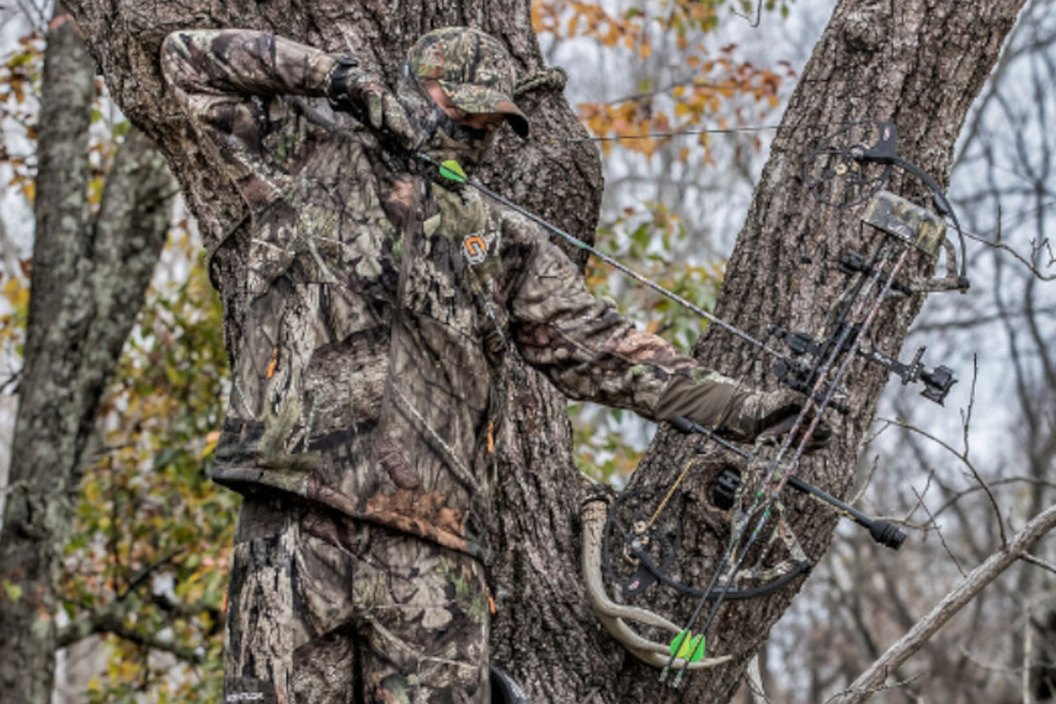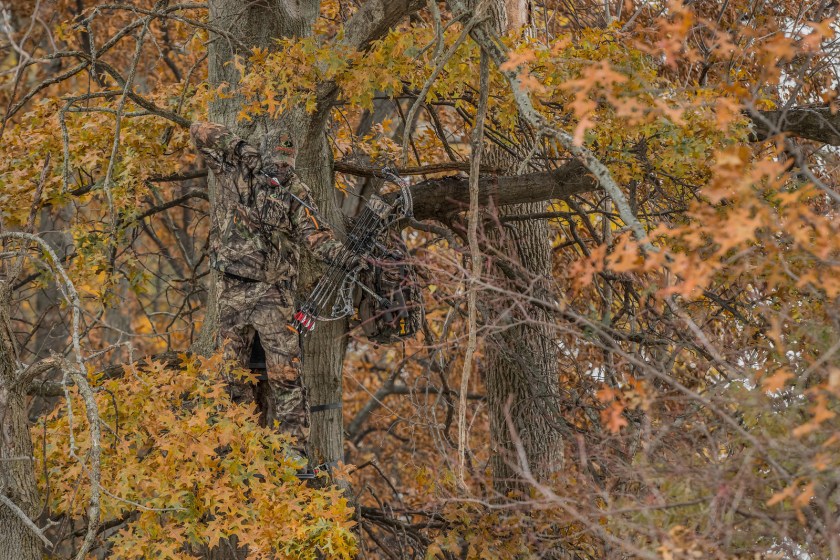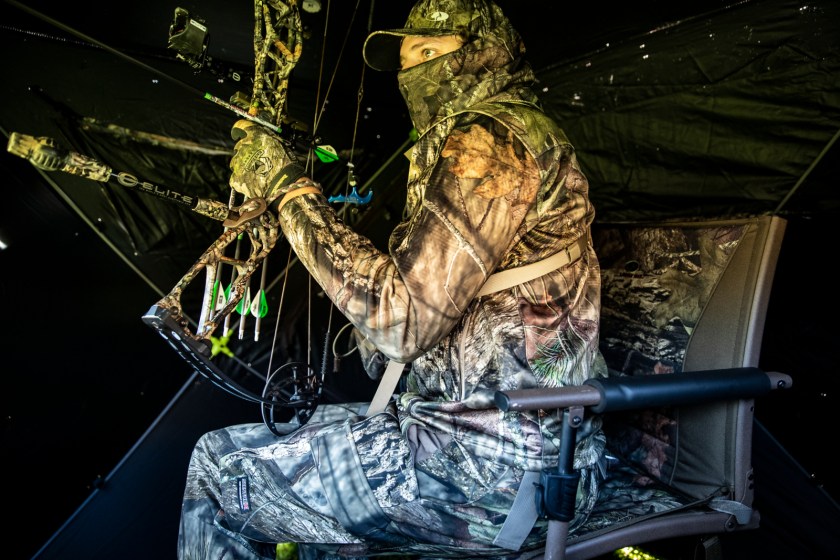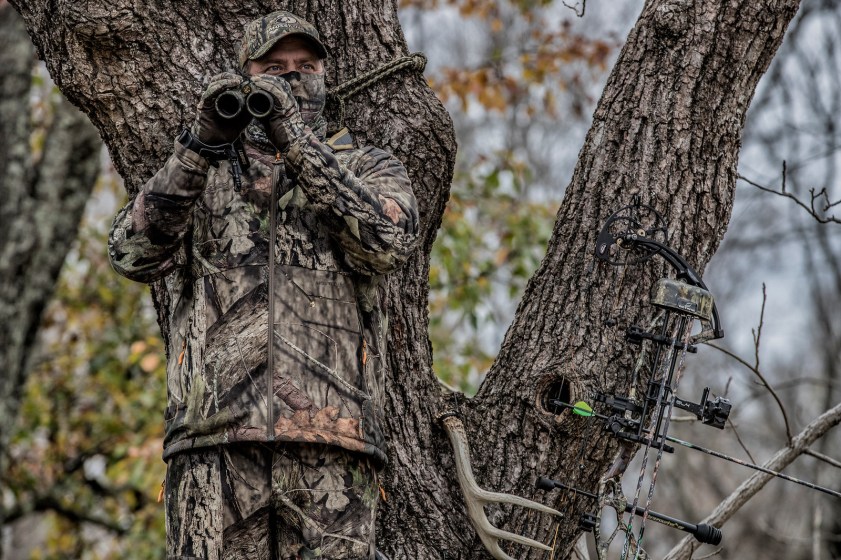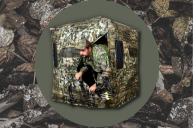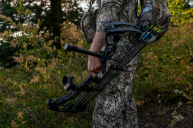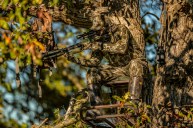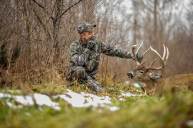North American deer hunters traditionally use two methods to fill the freezer with venison: a treestand or a ground blind. Most hunters have hunted from both at some point, waiting for that big buck to come strolling past. However, have you ever weighed each method's pros and cons? Depending on the scenario, ground hunting may be more effective than hunting from a treestand and vice versa. Make better decisions on your spots in deer hunting season by reviewing the advantages and disadvantages.
Treestand Pros & Cons
Treestands are what most hunters use for whitetails, whether gun or bowhunting. A ground blind's most significant advantage is visibility from a higher vantage point. From an elevated position, you can see and shoot further. Deer are less likely to look for a threat from above.
Treestands also help with scent control. If a deer does catch your scent, it will be more challenging for them to pinpoint your position in the air than on the ground. Their natural predators generally do not strike from above.
Shooting from elevated positions is also safer and supplies more range and angles to make a shot. As we all know, deer seldom walk perfectly into shooting lanes. It's easier to adjust on the fly from a ladder stand or hang-on stand than a pop-up blind, where you may only have a single window open enough for a shot.
Treestands also offer a distinct advantage over ground blinds for most archery purposes. Bowhunting requires more movement to get into position and draw a recurve or compound bow. The margin for error is much smaller. It is easier to get away with these movements above the deer's line of sight.
There are some obvious disadvantages to treestands, however. Some areas severely lack huntable trees if you live in a plains state like Kansas or the Dakotas. This makes things more complicated for bowhunters-finding a huntable tree that a big buck regularly passes can lead to a hair-pulling amount of frustration.
Treestands are also very noticeable on public land, making them targets for use by other hunters-or, worse, theft. Climbing treestands negates some of that problem, but it also means hauling your stand with you every time you hunt, and most climbing stands are pretty heavy. You can only use this stand on relatively straight trees, further complicating the matter.
Ground Blind Pros & Cons
I have been a ground blind user for most of my hunting career. Most of my harvests happen in ground blinds. They are highly effective, but like treestands, there are pros and cons. The biggest pro is that you can use ground blinds quite literally anywhere. We're even talking about places with a severe lack of huntable trees. Blinds offer excellent camouflage and concealment.
Many modern blinds use two-way specialty mesh that lets the hunter see outside clear as day, but the deer cannot see in. This feature is a massive advantage for those using bowhunting gear from the ground.
One thing I love most about ground blinds is that a good one will be enclosed and protect you from rain, wind, and snow, allowing you to hunt longer and harder.
Not every treestand has a shooting rail or solid rest, either. Many commercial ground blinds do, or at the very least, allow for the use of shooting sticks for a solid rest. The more you can replicate conditions on the range, the better your odds of a clean, ethical harvest when the moment of truth arrives.
And yet, ground blind users often struggle with visibility. Since you are sitting at ground level, you have to place your blind perfectly to see the deer coming from a distance. Sure, you can put ground blinds just about anywhere. Should you? Definitely not.
I love the concealment of most blinds. But they create narrower shooting lanes than usual when adequately placed—turning and making that shot will be more complicated if a buck stands at an awkward angle behind you.
Along those same lines, while many blind makers have developed shoot-through mesh on their hunting blinds, most hunters will have a blind with open windows. While this works fine when you are sitting still and observing, you must be cautious in your movements around animals.
Nature conditions bucks to look for threats coming from concealment on the ground. The wrong movement at the wrong time will bust you, even in the best ground blinds on the market. Ground blinds are more noticeable to animals than treestands, too. Deer know their environment, and they will usually notice a set-up blind.
Sometimes, that will make them wary of going near it until it has been sitting outside for a while. In many areas, you must wholly brush in a ground blind for it to be effective. So you're looking at tons of extra work and scent spread while putting together your setup.
Deer have an easier time winding humans from the ground than in the air. Last year, I had a doe walk in front of me at 20 yards with the wind blowing into her face. She never noticed I was there. A few nights later, I was sitting on the ground, and the same thing happened with a wind shift. I was busted immediately.
Ground Blinds vs. Treestands
While many hunters prefer the ground blind vs. treestand debate, the most successful hunters know how to utilize each piece of equipment and when. When deciding what will work best, there are various factors to consider. Shot distance and terrain are one. Are you setting up on a picked corn or beanfield with a rifle? A ground blind with a good pair of shooting sticks may be preferable here versus a treestand.
You may have found a natural funnel. Deer are moving back and forth between a feeding and bedding area through a narrow stretch of land sandwiched between a fast-moving river and a ton of fallen timber. In this scenario, a treestand is preferable because it allows you to see deer moving back and forth from either direction. Your shooting window will likely be narrower, giving a distinct advantage to this type of setup for a bow or crossbow.
When scouting your setups, be sure to think critically about each location. Consider factors like wind direction and visibility. Maybe that large oak on the edge of the foot plot offers a great view of the entire field, but the wind will be drifting back into the bedding area. The opposite end of the field provides no trees but a better position wind-wise. In this scenario, going with a ground blind may be best.
Consider hunting pressure. What are people using, and deer responding to that? Maybe that piece of public ground is blanketed by people in makeshift ground blinds. A strategic stand placement will put you above the competition and the prying eyes of whitetails.
Remember that no one scenario will be "one size fits all" for either a ground blind or treestand. Be flexible and intelligent in your setups; the result will be more deer on the ground season after season.
This article was originally published on February 7, 2022.
For more outdoor content from Travis Smola, follow him on Twitter and check out his Geocaching and Outdoors with Travis YouTube channels.
READ MORE: LEUPOLD DEBUTS NEW LINE OF PERFORMANCE EYEWEAR
